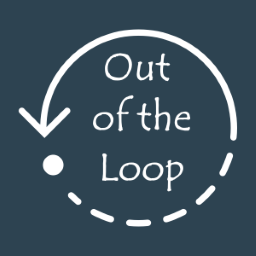In response to this comment, I went to find the previous post, then came back here to say, noice.
BewilderedBeast
Generally confused, occasionally awesome.
- 3 Posts
- 29 Comments
I am angry at myself for actively seeking this one out based on your comment in another meme. Why do I do this to myself.

 3·1 年前
3·1 年前This is cool! I would be interested in running a handful of instances of this, and then comparing the results.
I did. As someone who is also new to Linux and to programming, I’ve run into similar hurdles and it is frustrating. Now I’m not trying to build a gaming system, but just something to learn on. I’m still learning to read through and interpret documentation and it often get way too over my head that I need to ask the community for help; and honestly, I don’t like to because of reactions like yours.
It’s really disheartening to come to the community, try to ask for help and to be told that I should just do it right, or to catch flak for not asking the rifht question, or to have someone share a chunk of code and say, “just use this,” which doesn’t help me learn.
To be clear, my previous comment was a pre-coffee and just irked me in the wrong way; I do owe you an apology for that so, sorry.
And you, rather than helping someone who admitted that they were new to the community and trying to learn, decided to just be a dick.
If my customer sent me this much detail, I would be a happy tech.

 9·2 年前
9·2 年前As someone who enjoys quantum mechanics, but papers are too far over my head; and has struggled with a nagging sense that something about all the explanations
just wasn’t making sense, thank you for this beautifully clear explanation of how these conclusions were reached.

 2·2 年前
2·2 年前So much this. As someone who runs a technical call center, I don’t know is an acceptable answer but follow it with a plan to find out!

 8·2 年前
8·2 年前Another common one that I hear is, “Why do all cars look the same?” The truth of it comes down to two general factors, safety and improving aerodynamics to improve fuel economy.
Definitely recommend the enhanced edition! Remember that frequent use of the pause function is strongly recommended.
I’m so excited for you! They’re going to be delicious!
https://www.spaceflightnow.com/news/n0410/04noaanreport/
Probably a lot like the person responsible for dropping the NOAA-19 satellite.

 295·2 年前
295·2 年前It’s important to find work that also nourishes your soul.
Under capitalism, value is extracted and concentrated. That in turn means that your employer is motivated to get as much value out of you as they can. Companies are motivated to charge you as much as they can convince you to pay.
Think about a friend who might ask to buy something of yours; let’s say it’s a sofa. If we apply that same logic of capitalism, you should try to get as much money as possible. I don’t know about you, but I don’t like the way that it feels.

 6·2 年前
6·2 年前I agree with this plan. There’s too much risk and we don’t have reason to trust Meta.

 4·2 年前
4·2 年前Because paywall.
Opinion by Katie Mack July 06, 2023 at 1:05 p.m. ET Katie Mack is the Hawking chair in cosmology and science communication at the Perimeter Institute for Theoretical Physics and the author of “The End of Everything (Astrophysically Speaking).” When, eight years ago, I learned that gravitational waves had been detected, I felt seasick. But this past month’s report of evidence that the cosmos is churning with low-frequency gravitational waves sent me reeling. As a physicist, I’m used to knowing that an invisible world of particles and waves moves through the universe. I’ve made peace with being constantly skewered by neutrinos and cosmic rays. I blithely submit to X-rays at the dentist and to radio waves everywhere. But a gravitational wave? That’s a distortion of space-time itself — a stretching and squeezing of the fabric of reality, a wave of deformation tearing through the cosmos, warping everything in its path. The monstrous denizens of the intergalactic deep reveal themselves not through the light they emit but by how they stir the space-time we share. When a gravitational wave moves through you, you are, for a moment, a different shape. It’s a tiny effect, of course. The first gravitational waves detected in 2015 — by the Laser Interferometer Gravitational-Wave Observatory (LIGO) facilities in Livingston, La., and Hanford, Wash. — were triggered by black holes colliding a billion light-years from Earth and changed the length of the four-kilometer-long detectors by less than one-thousandth the width of a single proton. Lying in bed on the night I heard about this breakthrough, I thought about the inescapable ripples in space altering me on a subatomic level. I thought I would never again feel I was on truly solid ground. Now, with the latest news from the North American Nanohertz Observatory for Gravitational Waves (NANOGrav), astronomers have a completely new and audacious way to make vivid those choppy cosmic waters. Like light, gravitational waves come in different frequencies, depending on their source. Pairs of black holes around the mass of the sun produce short bursts of high-frequency gravitational waves as they wheel around each other hundreds of times a second. That’s what the LIGO experiment picks up. Supermassive black holes are a different story. Millions or billions of times as massive as the sun, they lurk at the hearts of galaxies. The one at the center of our own Milky Way, called Sagittarius A*, is 4 million solar masses. Our neighbor the Andromeda galaxy has a central black hole believed to be 30 to 50 times that. It is still something of a mystery exactly how supermassive black holes come to be such behemoths. But it’s clear that when their host galaxies collide, they eventually eat each other, too. Gravitational-wave detectors on Earth, such as LIGO, are of no use here. The final orbits of paired supermassive black holes can take years or decades while their gravitational waves stretch out across light-years. It’s not possible with current technology to build a detector that large, sensitive to waves with such low frequencies. That’s why astronomers had to use the Milky Way itself as a makeshift observatory. In June, for the first time, astronomers revealed they had picked up traces of a background hum of low-frequency gravitational waves. It was embedded in 15 years of data from naturally occurring cosmic metronomes across the galaxy. These metronomes, called millisecond pulsars, are the spinning remnants of dead massive stars. They sweep beams of radio waves with every rotation, hundreds per second — and keep near- perfect time. Tiny discrepancies might be because of individual stellar idiosyncrasies or could be a sign that gravitational waves have changed the distance each pulse travels on its way to us. By monitoring dozens of pulsars, astronomers hunt for correlations in timing errors that are a smoking gun of passing gravitational waves. And that’s just what they found. The discovery is not going to revolutionize science in one fell swoop. For one thing, it is not entirely clear where the hum comes from, though it looks very much like what we expect from the combination of gravitational waves generated by all the supermassive black hole collisions across the cosmos. If it is, it’s a first step toward a whole new way of seeing the universe that will give us fantastic insights into the formation and growth of galaxies. Already, for instance, there are hints in the data that supermassive black hole pairs might be heavier or more common than we thought. A few more years of data might reveal individual supermassive black hole collisions, alongside any burst of light they also produce. The hum could yet be something else entirely. It might be the quake from a violent event in the early universe, such as cosmic inflation — the spectacular expansion of space we think happened during the Big Bang. Another possible source is the vibrations of cosmic strings, hypothetical webs of energy that stretch across the cosmos. There’s so much to discover. We’ve been bobbing around blindly on this cosmic sea, occasionally hit by an errant wave. Now we have our first glimpse of the entire ocean.
I’m excited for you! Ours said to expect one to two harvests from it, but it kept going for several rounds.











As someone who dropped put of business school to fix cars for a living, I feel this.